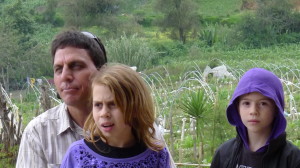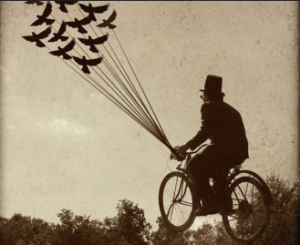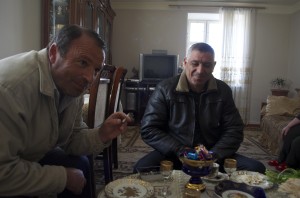Nearly ten years ago, moments before my mother took her last breath, her eyes looked deeply into mine, we locked gazes, and I felt her passing the contents of her soul from her body to mine. I did not feel torment, chaos, or even a sense of peace. It just happened, in the space of a single breath. It was, perhaps, less of a feeling than a knowing, though no words were spoken.
Perhaps it was just my imagination– some need to feel as though my mother died peacefully, that she could let go because now I could carry whatever weighed her down. But if it were just imagination, the timing was rather extraordinary. I felt the knowing, and she was gone.
I don’t talk to too many people about this experience, especially my in-laws in the Midwest, who wouldn’t say it out loud but would think that someone ought to tighten up those loose screws of mine. It wasn’t until I read about a very similar experience, most likely in a Stephen Levine book, that I learned that what I experienced had a name: it was called a “phowa moment.”
In some Buddhist traditions, “phowa” is viewed as the “transfer of consciousness at the moment of death.” The transfer occurs through the top of the head, sometimes helped along by a specially trained assistant, into a “Buddha-field of one’s choice,” according to Wiki. What exactly constitutes a Buddha-field is beyond me, but I suspect that I am not it. Then again, I always felt a bit like a Buddha in my mother’s eyes, so who knows?
Prior to my arrival at her house, my sister, brother and father lingered by her bedside, lovingly holding her hand, touching her forehead, and trying to console her as her heart gave out, her lungs filled with water, and she slowly drowned to death. They told me she had been horribly fitful; no surprise there as my mother was a fighter and would not give in to anyone or anything easily. By the time I arrived hours later she was much calmer, farther gone I suppose, her eyes scanning the room, locking gazes occasionally as she had always done. She could not speak and was generally unresponsive, so still technically comatose.
I have always been somewhat disappointed by the fact that, although I felt a clear knowing that some sort of transfer occurred, and I do believe that that transfer somehow led to a release on my mother’s part, I never experienced any knowledge of specific content. I wanted to know what went on inside her head, what her thoughts were, what her torments were. I wanted her spirit to be free from fear, to take her fears away, just as mothers take on their children’s pain. I wanted it to be something more familiar to me, something like a Vulcan mind meld, where I could hold inside of me the knowledge of someone else. But perhaps that is not how the soul works.
Regardless of the words we attach to it, my mother certainly appeared to be at peace when she died, and I will never know if the moment when somehow I felt a passing through of something essential I am calling “soul” played a part in her finding that peace. What I do know is that science tells us precious little about those moments, so what we are left with is a choice of what to believe. And there, I am comforted only by the knowledge that her life on earth contained much joy but also a lot of suffering, and I trust that suffering is no longer.





 There is a scene in the recent movie, “The Way, Way Back” in which the 14-year-old lead character discovers a bicycle in the garage of his mother’s new boyfriend’s summer cottage where he has been trapped for what promises to be a torturous summer. With a spectacular blast of background music he breaks out of the garage on the diminutive bike and rides away with a new sense of freedom.
There is a scene in the recent movie, “The Way, Way Back” in which the 14-year-old lead character discovers a bicycle in the garage of his mother’s new boyfriend’s summer cottage where he has been trapped for what promises to be a torturous summer. With a spectacular blast of background music he breaks out of the garage on the diminutive bike and rides away with a new sense of freedom.



